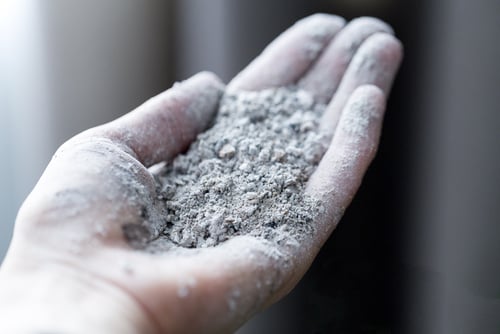Silica is a naturally occurring mineral found in sand, rock, and soil. It is a common component of construction materials such as concrete, brick, and mortar, and is also used in a variety of industrial products such as glass, ceramics, and electronics. While silica is not harmful when it is in its solid form, it can be dangerous when it is inhaled in the form of fine dust or fumes.
Exposure to silica dust can lead to a range of respiratory problems, including silicosis, a lung disease that can cause difficulty breathing, coughing, and chest pain. It can also increase the risk of lung cancer and other respiratory diseases.
To protect workers from the dangers of silica exposure, the Occupational Safety and Health Administration (OSHA) has established specific standards for the construction and general industry sectors. It’s important for employers to understand the differences between these standards and to implement the appropriate controls to protect their employees.
General Industry OSHA Standards
OSHA’s general industry standards for silica exposure apply to all industries, with the exception of construction, agriculture, and maritime. These standards are found in 29 CFR 1910.1053 and require employers to take the following actions:
- Measure the amount of silica in the air to determine if it exceeds the permissible exposure limit (PEL). The PEL for silica in the general industry sector is 50 micrograms per cubic meter of air (μg/m3) averaged over an 8-hour work shift.
- Implement engineering controls, such as ventilation systems, to reduce silica exposure to below the PEL.
- Use personal protective equipment (PPE) when engineering controls are not sufficient to reduce exposure to below the PEL.
- Provide respirators to workers when the PEL is exceeded, even if engineering controls and PPE are being used.
- Establish a written exposure control plan that outlines the measures being taken to protect workers from silica exposure.
- Provide training to workers on the dangers of silica exposure and the controls in place to protect them.
Construction OSHA Standards
OSHA’s construction standards for silica exposure are found in 29 CFR 1926.1153 and are more stringent than the general industry standards. In addition to the requirements outlined above, the construction standards require employers to:
- Measure the amount of silica in the air to determine if it exceeds the action level (AL). The AL for silica in the construction sector is 25 μg/m3 averaged over an 8-hour work shift.
- Implement engineering controls, such as water spraying systems, to reduce silica exposure to below the AL.
- Use PPE when engineering controls are not sufficient to reduce exposure to below the AL.
- Provide respirators to workers when the AL is exceeded, even if engineering controls and PPE are being used.
- Establish a written exposure control plan that outlines the measures being taken to protect workers from silica exposure.
- Provide training to workers on the dangers of silica exposure and the controls in place to protect them.
Personal Protective Equipment (PPE)
PPE is a key element of any silica exposure control plan. It includes items such as respirators, face masks, and goggles that are designed to protect workers from inhaling silica dust and fumes. When selecting PPE, it’s important to choose equipment that is appropriate for the task at hand and fits the worker properly.
Control Methodology
There are several approaches that can be taken to control silica exposure in the workplace. The most effective method is engineering controls, which involve altering the work environment or process to reduce the amount of silica in the air. This can include using ventilation systems to exhaust silica-containing dust, enclosing work processes to contain the dust, and using water or other wetting agents to suppress dust.
Another important control method is the use of administrative controls which involve changing work practices to reduce exposure. This can include rotating workers to different tasks, limiting the amount of time spent on high-exposure tasks, and providing training to workers on how to minimize exposure.
In some cases, PPE may also be necessary to protect workers from silica exposure. This can include respirators, which are specialized masks that fit over the nose and mouth and filter out silica particles. Other types of PPE that may be used include face/eye protection and other protective clothing.
It’s important for employers to carefully assess the risks of silica exposure in their workplace and to implement the appropriate controls to protect their workers. This may involve a combination of engineering controls, administrative controls, and PPE, and should be outlined in a written exposure control plan. By taking these steps, employers can help prevent the serious respiratory problems that can result from silica exposure and ensure the health and safety of their workers.
Check out our About Us page to learn about TSG Safety’s Chief Safety Guy and how we can help you with ensuring compliance with silica regulations.

